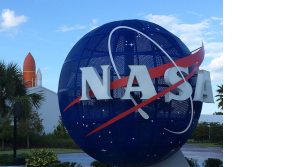Nationwide — As NASA prepares to send its first rocket toward the Moon in nearly 50 years, a University of Iowa researcher is among the lead scientists on a separate robotic mission.
Jasper Halekas, a University of Iowa professor of physics and astronomy, is deputy principal investigator for the Lunar Vertex project. It will send a space probe to an area of the Moon where there’s a strong magnetic field as well as a mysterious swirl of both very light and very dark soils.
The Lunar Vertex spacecraft, due for launch in 2024, will include a rover that will explore the Moon’s surface. On Monday, August 29th, NASA had to scrub the scheduled launch of its unmanned Artemis One rocket due to an engine problem. It may be able to lift-off as soon as Friday, September 2nd, on a planned 42-day mission. It’s NASA’s first significant rocket launch since the space shuttle program was retired 11 years ago and it’s the first moonshot since the 1970s.
In Greek mythology, Artemis is the twin sister of Apollo, which was the name of the successful Moon missions of the 1960s and ’70s. Some may question why we’re planning to invest so much money to return to the Moon, but Helekas says NASA spending is only three tenths of one percent of the national budget, versus 13 percent for the military.
From huge evolutions in medical care to TV remote controls and even microwave ovens, many of the modern pleasures we enjoy today have their roots in the American space program.
The Artemis missions are exciting, he says, as they’re just the first steps toward building a permanent base on the Moon which could be used as the launch pad for crewed missions to Mars. Iowa astronaut Raja Chari, a Cedar Falls native, is part of the Artemis team and could be among the first Americans to again make boot-prints in lunar dust.













